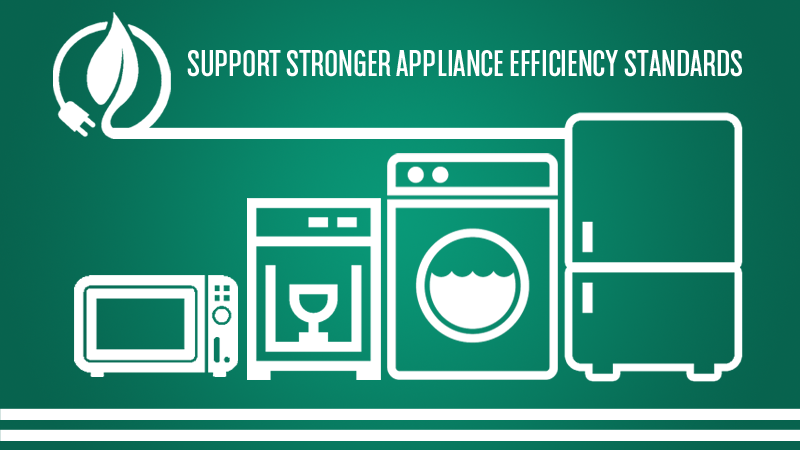Last week, the House Committee on Energy & Technology passed H.410, the bill to expand appliance efficiency standards to products that are not currently covered at the Federal level. The bill passed 7-1 with tripartisan support (see below for the full vote count).
The standards included in H.410 would save Vermonters $210 million on their energy bills by 2035. In 2025 alone, the carbon pollution reduction of these standards would be equivalent to taking nearly 6,000 cars off the road.
Following Vermont’s lead, other states across the country are in the process of passing similar legislation that would include both protecting existing standards (which Vermont did in H.411 in 2017) and expanding to new standards, as H.410 proposes to do. Legislators in Washington, Massachusetts, and Rhode Island have been taking hearings on similar legislation to both H.411 and H.410, California continues its leadership in expanding appliance standards, and Governor Cuomo of New York recently announced that expanding appliance efficiency standards was one of his top priorities for 2018.
The bill passed the Energy & Technology Committee despite opposition and misleading claims from the national industry on one particular standard in the bill. The standard under discussion would close a loophole that currently allows extremely inefficient fluorescent lightbulbs to be manufactured and sold. Initial standards for this type of lightbulb were originally adopted in 1995, but today you could install a lightbulb that is nearly 20% less efficient than the 1995 standard. That makes closing this loophole one of the most impactful pieces of this legislation from a carbon and energy standpoint.
Representatives of the national lighting industry, testifying by phone, made some strong claims about the impact of closing this loophole, all of which were immediately rebutted by members of the Committee and by witnesses in support of the bill who were in the room:
- Industry tried to say there were no efficient products that actually could be switched out for this type of lamp, when they themselves manufacture such a product.
- Industry tried to say that there were safety concerns with this kind of lighting switch, when Representative Curt McCormack, a co-sponsor of the legislation and a long time electrician, shared experiences proving that was not the case.
- Industry tried to say that this legislation would lead to job losses, when the bulbs that would be use to replace the inefficient bulbs are made in the same factory in the U.S., meaning that it’s likely that the jobs would be shifted but not lost.
You can find VPIRG’s testimony on the bill, and in particular this important lighting standard here.
H.410 is based on a model bill written by the Appliance Standards Awareness Project (ASAP), an arm of the American Council for an Energy Efficient Economy (ACEEE). ASAP advocates nationwide for protecting and expanding appliance efficiency standards to save money and energy and reduce carbon pollution. Other advocates who spoke out in favor of the bill were Efficiency Vermont and Capstone Community Action.
House Energy and Technology Committee – H.410 Vote:
- Rep. Stephen Carr, Chair (D-Brandon) – Yes
- Rep. Curtis McCormack, Vice Chair (D-Burlington) – Yes
- Rep. Corey Parent, Ranking Member (R-St. Albans City) – Yes
- Rep. Robin Chesnut-Tangerman (D-Middletown Springs) – Yes
- Rep. Robert Forguites, Clerk (D-Springfield) – Yes
- Rep. Laura Sibilia (I-Dover) – Yes
- Rep. Warren Van Wyck (R-Ferrisburgh) – No
- Rep. Michael Yantachka (D-Charlotte) – Yes

